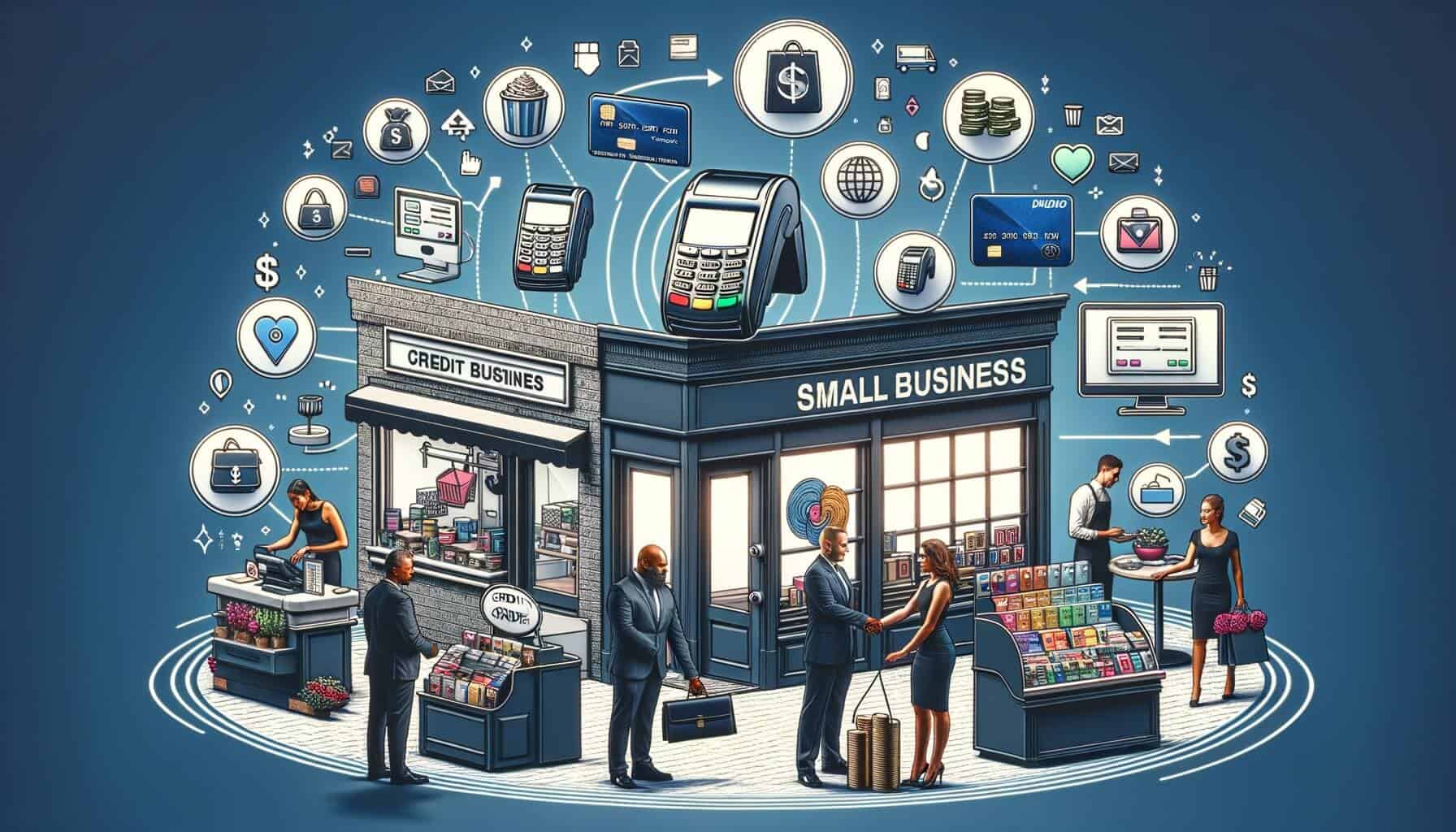
By Crystal Hopkins March 31, 2025
In today’s digital age, credit card machines have become an essential tool for small businesses. Gone are the days when cash was the primary mode of payment. With the rise of e-commerce and the increasing popularity of card payments, having a credit card machine is crucial for small businesses to stay competitive and cater to the evolving needs of their customers.
Accepting credit card payments offers numerous benefits for small businesses. Firstly, it enhances customer convenience. Customers prefer the ease and security of paying with their credit cards, as it eliminates the need to carry cash or write checks. By accepting credit card payments, small businesses can attract a wider customer base and increase sales.
Secondly, credit card machines provide a level of professionalism and legitimacy to small businesses. When customers see a credit card machine at the checkout counter, it instills confidence in the business and reassures them that their transactions will be secure. This can help build trust and credibility, leading to repeat business and positive word-of-mouth referrals.
Lastly, credit card machines offer valuable insights and data for small businesses. Many modern credit card machines come equipped with advanced reporting features that provide detailed transaction information. This data can be used to analyze sales patterns, identify popular products, and make informed business decisions. By leveraging this information, small businesses can optimize their operations and improve profitability.
Factors to Consider Before Getting a Credit Card Machine for Your Small Business
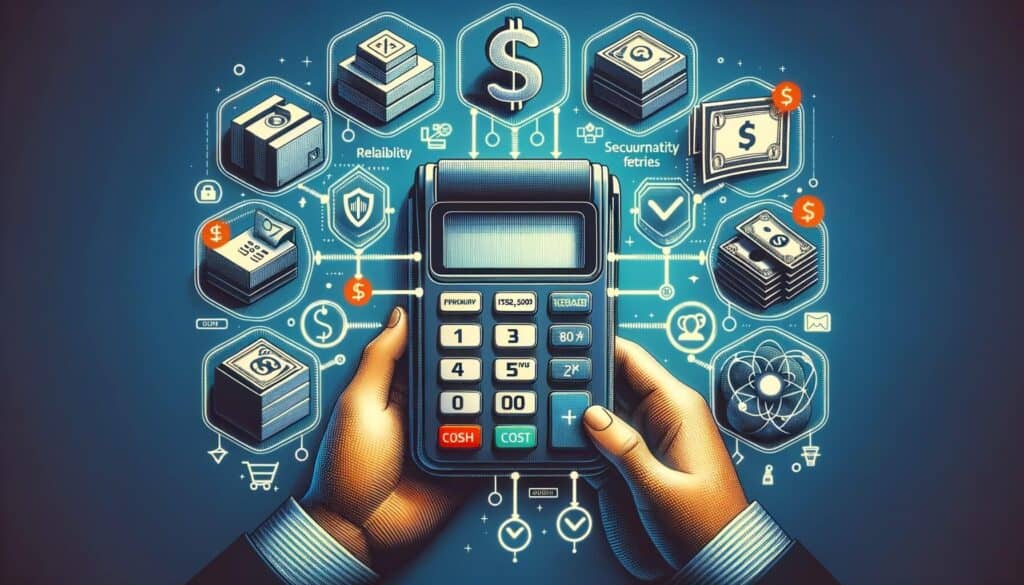
Before diving into the process of obtaining a credit card machine, it is important to consider several factors to ensure you choose the right one for your small business. Here are some key factors to consider:
1. Business Type and Size: The nature and size of your business play a crucial role in determining the type of credit card machine you need. For example, if you run a retail store, you may require a countertop terminal, while a mobile business may benefit from a wireless or mobile credit card machine.
2. Payment Volume: Consider the volume of credit card transactions your business processes on a daily basis. If you have a high volume of transactions, you may need a credit card machine with faster processing capabilities and a higher memory capacity.
3. Connectivity Options: Evaluate the available connectivity options in your area. Credit card machines can be connected via phone lines, internet connections, or wireless networks. Choose a machine that is compatible with the available connectivity options to ensure seamless payment processing.
4. Security Features: Security is of utmost importance when it comes to credit card transactions. Look for credit card machines that comply with Payment Card Industry Data Security Standard (PCI DSS) requirements and offer encryption and tokenization features to protect customer data.
5. Cost: Consider the upfront costs, ongoing fees, and transaction fees associated with credit card machines. Compare different providers and their pricing structures to find the most cost-effective option for your small business.
Types of Credit Card Machines: Choosing the Right One for Your Small Business
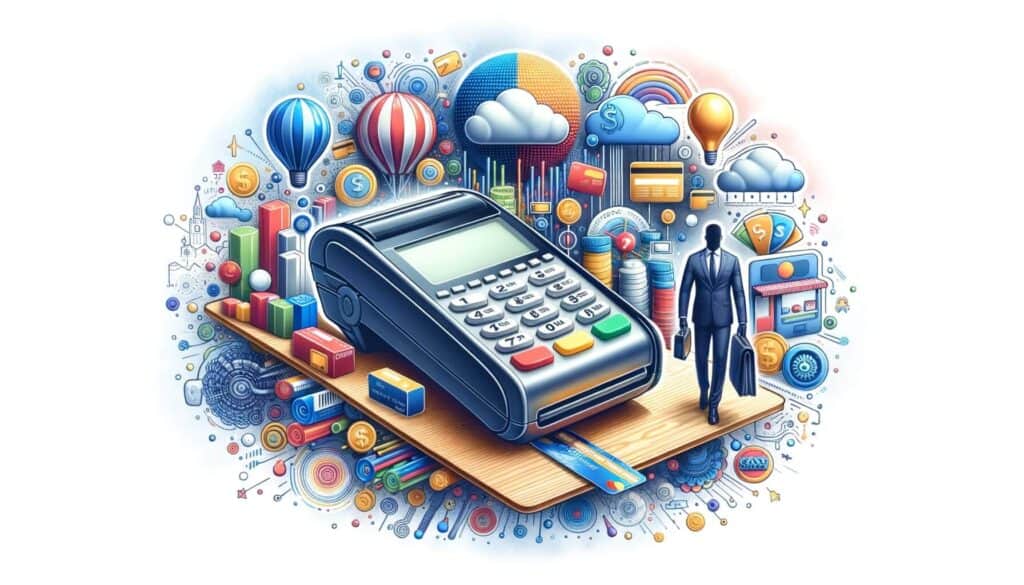
There are several types of credit card machines available in the market, each catering to different business needs. Understanding the different types can help you choose the right one for your small business. Here are the most common types of credit card machines:
1. Countertop Terminals: Countertop terminals are the traditional credit card machines that are typically found at the checkout counters of retail stores. They are connected to a phone line or internet connection and require a physical card swipe or insertion. Countertop terminals are suitable for businesses with a fixed location and a high volume of transactions.
2. Wireless Terminals: Wireless terminals offer flexibility and mobility, making them ideal for businesses that operate on-the-go or have multiple locations. These machines use cellular networks or Wi-Fi to process transactions, eliminating the need for a physical connection. Wireless terminals are commonly used by food trucks, delivery services, and trade show vendors.
3. Mobile Credit Card Readers: Mobile credit card readers are small devices that can be attached to smartphones or tablets, turning them into portable credit card machines. They connect via Bluetooth or audio jack and are perfect for small businesses that require mobility and have low transaction volumes. Mobile credit card readers are commonly used by small vendors, artisans, and service providers.
4. Virtual Terminals: Virtual terminals allow businesses to accept credit card payments online or over the phone. They do not require any physical hardware and can be accessed through a web browser. Virtual terminals are suitable for businesses that primarily operate online or offer remote services.
When choosing the right type of credit card machine for your small business, consider factors such as your business type, mobility requirements, transaction volume, and budget. It is also advisable to consult with a reputable credit card machine provider to understand the specific features and functionalities of each type.
How to Apply for a Credit Card Machine: Step-by-Step Guide
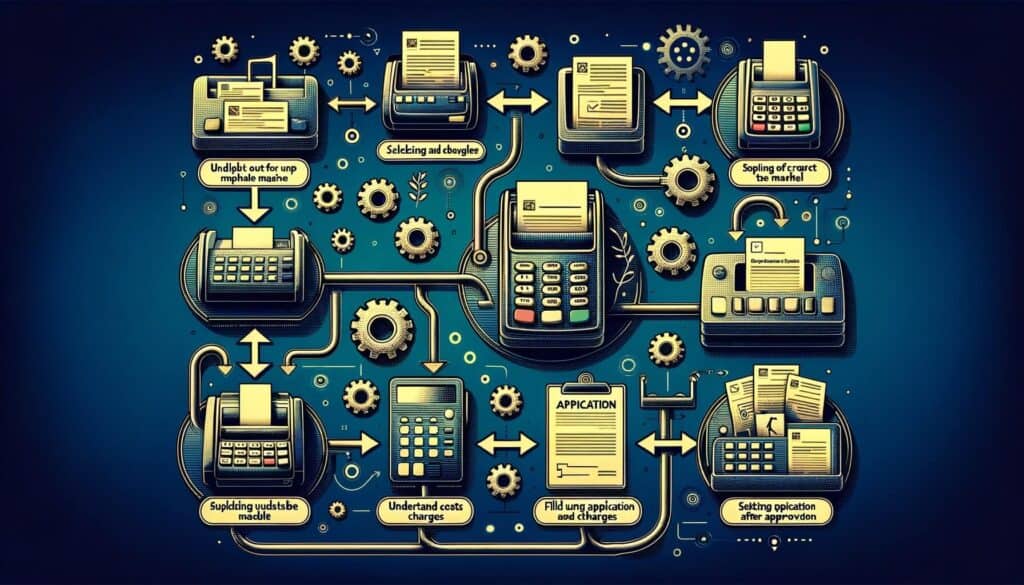
Applying for a credit card machine for your small business involves several steps. Follow this step-by-step guide to ensure a smooth application process:
1. Research Credit Card Machine Providers: Start by researching different credit card machine providers and comparing their offerings. Look for providers that have a good reputation, offer competitive pricing, and provide reliable customer support.
2. Determine Your Business Needs: Assess your business needs and determine the type of credit card machine that best suits your requirements. Consider factors such as transaction volume, mobility, and connectivity options.
3. Gather Required Documents: Most credit card machine providers require certain documents to process your application. These may include proof of business ownership, identification documents, bank statements, and tax information. Gather all the necessary documents to expedite the application process.
4. Fill Out the Application Form: Once you have chosen a credit card machine provider, fill out their application form. Provide accurate and complete information to avoid any delays in the approval process. Double-check the form for any errors or missing information before submitting it.
5. Await Approval: After submitting your application, the credit card machine provider will review it and assess your eligibility. This process may take a few days to a couple of weeks, depending on the provider. Be patient and await their decision.
6. Sign the Agreement: If your application is approved, you will receive an agreement from the credit card machine provider. Carefully review the terms and conditions, fees, and any other contractual obligations. Sign the agreement only if you are satisfied with the terms.
7. Arrange for Installation and Setup: Once the agreement is signed, coordinate with the credit card machine provider to schedule the installation and setup of your credit card machine. Ensure that you have the necessary infrastructure, such as phone lines or internet connections, in place before the installation date.
8. Train Your Staff: Familiarize yourself and your staff with the operation of the credit card machine. Train them on how to process transactions, handle different payment methods, and troubleshoot common issues. This will ensure a smooth transition to accepting credit card payments.
Understanding the Costs Associated with Credit Card Machines for Small Businesses
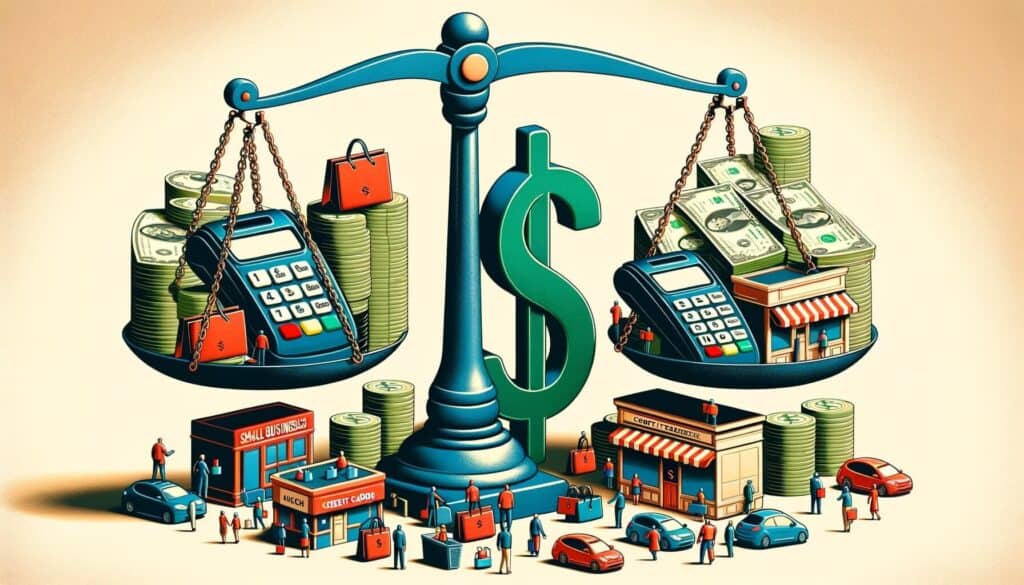
Before getting a credit card machine for your small business, it is important to understand the costs associated with it. Here are the key costs to consider:
1. Upfront Costs: Credit card machines typically have an upfront cost, which includes the purchase or lease price of the machine. The cost can vary depending on the type and features of the machine. Compare different providers to find the most cost-effective option.
2. Transaction Fees: Credit card machine providers charge transaction fees for each credit card transaction processed. These fees are usually a percentage of the transaction amount or a flat fee per transaction. Consider the transaction volume of your business and compare the transaction fees offered by different providers.
3. Monthly Fees: Some credit card machine providers charge monthly fees for the use of their services. These fees may cover maintenance, customer support, and access to reporting features. Evaluate the monthly fees and consider the value they provide in terms of support and additional features.
4. Equipment Leasing Fees: If you choose to lease a credit card machine instead of purchasing it outright, you will incur monthly leasing fees. Leasing fees can add up over time, so carefully consider the total cost of leasing versus purchasing to make an informed decision.
5. Chargeback Fees: Chargebacks occur when a customer disputes a credit card transaction and requests a refund. Credit card machine providers may charge a fee for each chargeback processed. Familiarize yourself with the chargeback policies and fees of your provider to understand the potential costs involved.
6. PCI Compliance Fees: To ensure the security of credit card transactions, businesses are required to comply with Payment Card Industry Data Security Standard (PCI DSS) requirements. Some credit card machine providers charge additional fees for PCI compliance services. Consider these fees when evaluating the overall cost of a credit card machine.
When comparing the costs of different credit card machine providers, it is important to consider the overall value they offer. Look beyond the upfront costs and consider factors such as customer support, security features, and additional services provided.
Setting Up and Installing Your Credit Card Machine: A Comprehensive Guide
Setting up and installing your credit card machine correctly is crucial to ensure smooth payment processing. Follow this comprehensive guide to set up your credit card machine effectively:
1. Choose the Right Location: Select an appropriate location for your credit card machine. It should be easily accessible to both your staff and customers. Consider factors such as counter space, visibility, and proximity to power outlets or phone lines.
2. Ensure Proper Connectivity: Depending on the type of credit card machine you have, ensure that you have the necessary connectivity options available. If your machine requires a phone line or internet connection, ensure that it is properly set up and functioning before installing the machine.
3. Unpack and Inspect the Machine: Carefully unpack the credit card machine and inspect it for any damage. Check for any missing components or accessories. If you notice any issues, contact the credit card machine provider immediately for assistance.
4. Connect the Machine: Follow the manufacturer’s instructions to connect the credit card machine to the appropriate power source and connectivity option. Ensure that all cables are securely connected and that there are no loose connections.
5. Power On and Initialize the Machine: Once the machine is connected, power it on and follow the initialization process as outlined in the user manual. This may involve entering basic information, such as the date, time, and business details.
6. Configure Settings: Access the settings menu of the credit card machine and configure it according to your business requirements. This may include setting up tax rates, receipt preferences, and other customization options. Refer to the user manual for detailed instructions on configuring settings.
7. Test the Machine: Before accepting live transactions, perform a test transaction to ensure that the credit card machine is functioning correctly. Use a test credit card or a real credit card with a small transaction amount. Verify that the transaction is processed successfully and that the receipt is printed or displayed correctly.
8. Train Your Staff: Once the credit card machine is set up and tested, train your staff on how to use it effectively. Provide them with clear instructions on processing transactions, handling different payment methods, and troubleshooting common issues. Regularly update your staff on any software updates or changes to the credit card machine’s functionality.
Ensuring Security and Compliance with Credit Card Machines for Small Businesses
Security and compliance are paramount when it comes to credit card machines. Small businesses must take appropriate measures to protect customer data and comply with industry regulations. Here are some key steps to ensure security and compliance:
1. Choose a PCI Compliant Provider: Select a credit card machine provider that is PCI compliant. PCI compliance ensures that the provider follows industry-standard security practices to protect customer data. Verify the provider’s compliance status and inquire about their security measures.
2. Secure Network Connectivity: If your credit card machine connects to the internet or a network, ensure that the connection is secure. Use encryption protocols, such as Secure Sockets Layer (SSL) or Transport Layer Security (TLS), to protect data transmission. Regularly update the software and firmware of your credit card machine to patch any security vulnerabilities.
3. Protect Customer Data: Implement measures to protect customer data throughout the payment process. This includes encrypting cardholder data, securely storing sensitive information, and limiting access to authorized personnel only. Train your staff on data security best practices, such as not storing cardholder data on paper or electronic files.
4. Regularly Monitor and Audit: Monitor your credit card machine transactions regularly to detect any suspicious activity or anomalies. Implement auditing processes to review transaction logs, reconcile financial records, and identify any discrepancies. Regularly review your security measures and update them as needed to stay ahead of potential threats.
5. Educate Your Staff and Customers: Educate your staff on the importance of security and compliance. Train them on how to identify and report potential security breaches or fraudulent activities. Educate your customers on how to protect their card information and encourage them to report any suspicious transactions.
By prioritizing security and compliance, small businesses can protect their customers’ data, maintain their reputation, and avoid costly penalties or legal issues.
Troubleshooting Common Issues with Credit Card Machines: Tips and Solutions
Despite their reliability, credit card machines can encounter occasional issues that may disrupt payment processing. Here are some common issues and their troubleshooting tips:
1. Connectivity Issues: If your credit card machine is unable to establish a connection, check the physical connections and ensure that the phone line or internet connection is working properly. Restart the machine and try reconnecting. If the issue persists, contact your credit card machine provider for assistance.
2. Card Reading Errors: If the credit card machine is unable to read a card, ensure that the card is inserted or swiped correctly. Clean the card reader with a soft cloth to remove any dirt or debris. If the problem persists, the card may be damaged or incompatible with the machine. Ask the customer to try a different card or use an alternative payment method.
3. Printer Issues: If the credit card machine’s printer is not functioning correctly, check the paper roll and ensure that it is properly loaded. Replace the paper roll if necessary. If the printer is jammed, carefully remove any stuck paper. If the issue persists, contact your credit card machine provider for further assistance.
4. Error Messages: Error messages on the credit card machine’s display can indicate various issues. Refer to the user manual or contact your credit card machine provider for specific troubleshooting steps related to the error message. Follow their instructions to resolve the issue.
5. Slow Processing: If the credit card machine is processing transactions slowly, ensure that your internet connection or phone line is not experiencing any issues. Restart the machine and try again. If the problem persists, contact your credit card machine provider to investigate the issue further.
Frequently Asked Questions (FAQs) about Credit Card Machines for Small Businesses
Q1: How much does a credit card machine cost for a small business?
A1: The cost of a credit card machine for a small business can vary depending on the type of machine and the provider. Generally, you can expect to pay a one-time purchase fee ranging from $100 to $500, along with monthly fees and transaction fees. It is important to compare different providers and their pricing structures to find the most cost-effective option for your business.
Q2: Can I use my personal credit card machine for my small business?
A2: While it is possible to use a personal credit card machine for your small business, it is not recommended. Personal credit card machines are designed for individual use and may not meet the security and functionality requirements of a small business. It is best to invest in a dedicated credit card machine that is specifically designed for business use.
Q3: Are there any hidden fees associated with credit card machines?
A3: Some credit card machine providers may have hidden fees, such as setup fees, cancellation fees, or additional charges for certain features or services. It is important to carefully review the terms and conditions of the provider before signing up to ensure that you are aware of any potential hidden fees.
Q4: Can I accept contactless payments with a credit card machine?
A4: Yes, most modern credit card machines are equipped with contactless payment capabilities, allowing you to accept payments from contactless-enabled cards or mobile wallets such as Apple Pay or Google Pay. However, it is important to ensure that your credit card machine supports contactless payments before making a purchase.
Q5: How long does it take to receive a credit card machine after applying?
A5: The time it takes to receive a credit card machine after applying can vary depending on the provider and the application process. In some cases, you may receive the machine within a few days, while in others, it may take a couple of weeks. It is recommended to inquire about the estimated delivery time when applying for a credit card machine.
Conclusion
In conclusion, credit card machines have become an indispensable tool for small businesses in today’s cashless society. Understanding the importance of credit card machines, considering the factors before getting one, choosing the right type of machine, applying for it, understanding the associated costs, setting up and installing it correctly, ensuring security and compliance, and addressing frequently asked questions are all crucial steps in the process of obtaining a credit card machine for your small business.
By following this comprehensive guide, you can make an informed decision and seamlessly integrate credit card payments into your business operations, ultimately enhancing customer satisfaction and driving growth.